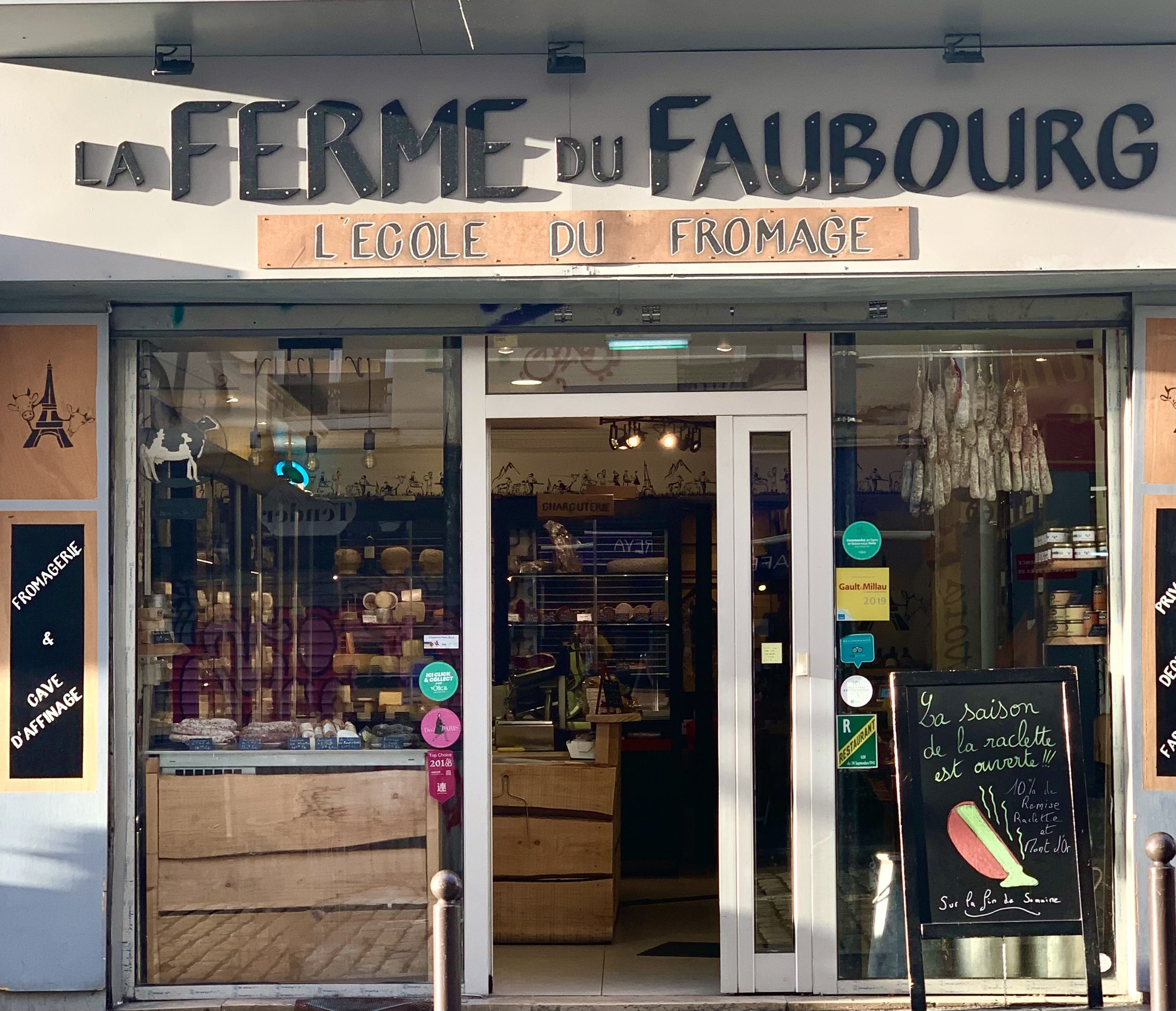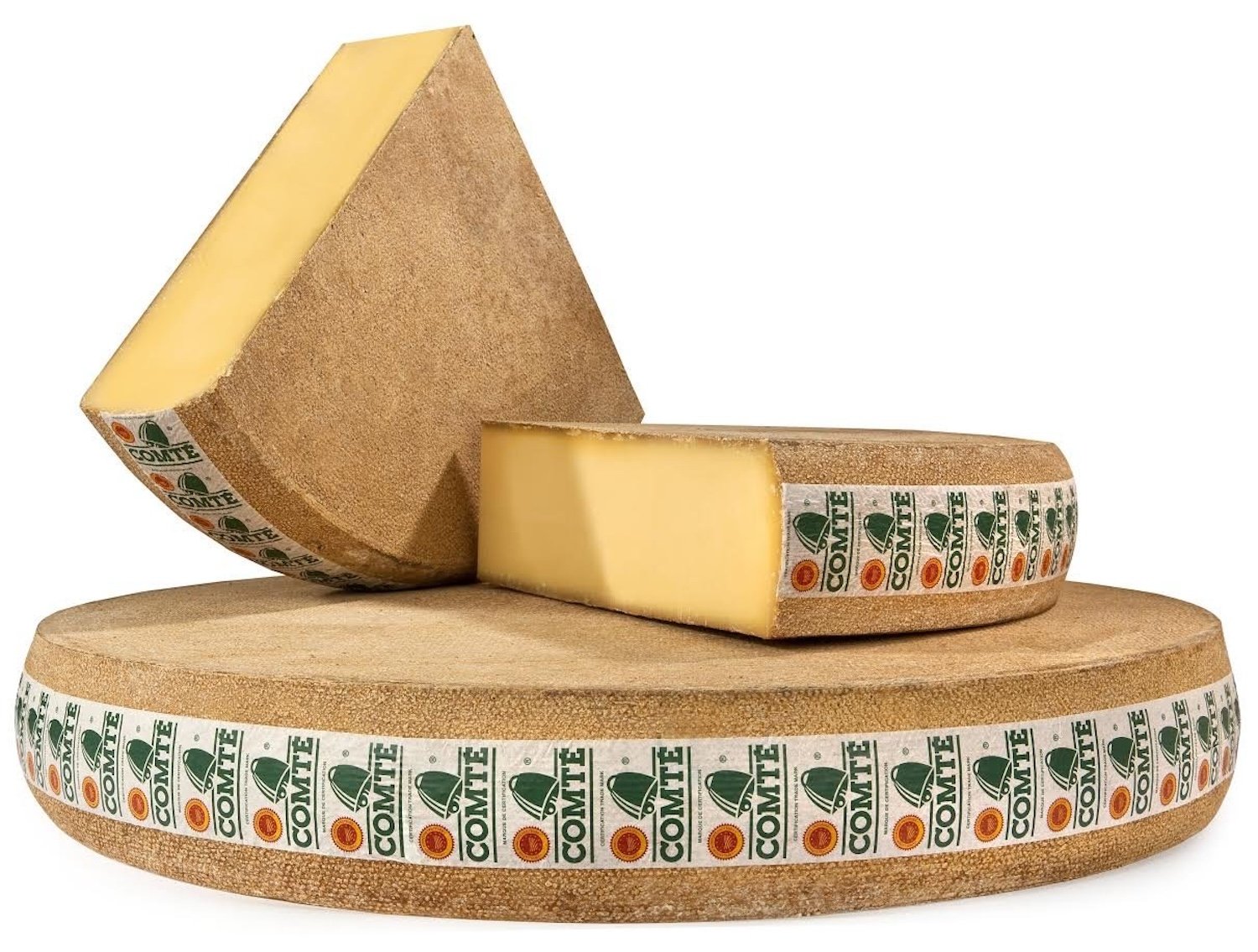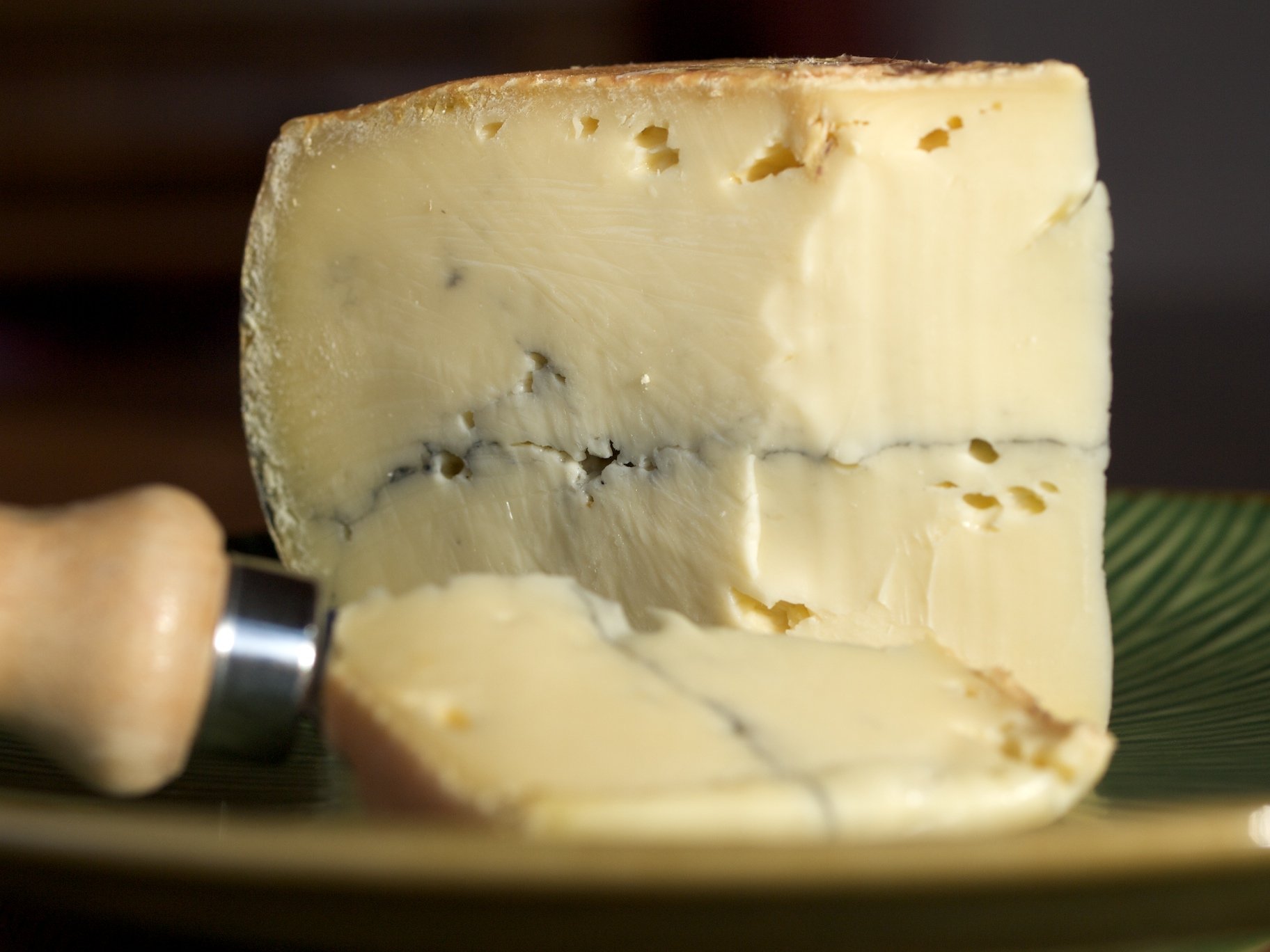Paris Wine & Cheese Class Champions Pairings
Paroles de Fromagers
It is fitting that the name of the Parisian cheese shop where I recently attended a class in wine and cheese pairing is Paroles de Fromagers. That translates as ‘words from cheese makers’ and Romain Ricciardi, one of the co-owners of the cozy cheese shop, shared many strong opinions with his words of wisdom in the two-hour class.
Ricciardi warned us at the outset that his pairing advice may go against the grain. In France, the classic pairing of cheese and red wine is usually de rigueur. However, he told us to open our minds because white wine is quite often the better pairing. And he cautioned that the white wine should not be extremely cold.
Romain Ricciardi and dairy map of France
How to judge a cheese and wine pairing
After we walked down the stone steps into a quaint, 17th century stone tasting room underneath the shop, where our seven cheeses were attractively arrayed on clay slabs, Ricciardi outlined the steps we were to follow in our pairing with three wines:
1) Observe the wine, swish it, smell it, describe its color. Identify the aroma notes (smoky? woodsy? fruity? minerally? floral?)
2) Then observe the cheese, its color, and smell it.
3) Most important: take a bite of cheese, swallow it, take a sip of wine, swallow it, then inhale through your mouth, and exhale through your nose to judge the pairing. This is the best way analyze the flavor and the pairing. Never sip wine while cheese is still in your mouth.
Pouilly-Fume
Goat Cheese & Sauvignon Blanc
Our first wine was a Beaulieu Frères Pouilly Fumé, (Sauvignon Blanc 2022) from the Loire valley. Its smoky, acidic taste pairs well with goat cheeses, Ricciardi informed us, especially when the cheese is from the same region.
As often occurs at the outset of cheese tasting classes I’ve taken previously, I find myself the only fan in the goat cheese cheering section. Our first cheese, Selles-sur-Cher (from a village of the same name) is a popular goat cheese also from the Loire, with an ashy grey rind. Its pungent goatiness is a plus (for those of us who love chevre) or a petit hurdle. On the map of France, our instructor pointed out the most important area for goat cheese in France.
Selles-sur-Cher goat cheese. CC BY-SA 3.0, via Wikimedia Commons
Ricciardi instructed us to examine the cheese, paying attention to its color, inside and outside, and the charcoal on the rind. This cheese has a dense heart and is creamy close to the rind. It’s important to pay attention to color, he informed us. Goat cheese is always white, sheep cheese is always ivory, and cows’ milk cheese is always yellow. (Goats digest the carotene so their cheese is white, while cows don’t digest it, so it’s yellow.)
This cheese has a short aging of 10-15 days. He told us to smell the intense goat cheese aroma, then taste it. Most of my classmates were put off by the smell but found the taste not as strong as the smell. Then we took a sip of the wine and tried to follow the direction to inhale through our mouths, and exhale through our noses. The pairing with the wine was divine. The wine became less acidic. Instead of a battle between wine and cheese, something happened to create a perfectly balanced bite.
Tomme Corsoise
Tomme Corsoise & Sauvignon Blanc
After a little bread to clean the palate, we moved on to the second cheese, a Tomme Corsoise, made of unpasteurized sheep’s milk, which has more fat than goat or cow’s milk cheeses. We examined the cheese, smelled its heart and its rind. It was lighter and less pungent than the goat cheese, with a dry, crumbly texture. Aged 3 months. Salty. Salt protects the cheese. Red wine would be too sharp, cautioned our teacher, so we stuck with the white. This cheese is from the North of Corsica.
The pairing with the wine didn’t go as well as the first. This cheese made the wine taste different, sweeter, a balance between salt and acidity. Acidity and fat are always a good combination, our teacher informed us. Many red wines are sharp and strong, so not good with sheep cheese. White is the best for cheese tasting, he repeated.
Comte & Sauvignon Blanc
Comté
Our third cheese was a Comté, aged 18 months, made in the spring, pasteurized, but with a cooked curd. It’s important to know which season the cheese was made because milk in the spring, summer and fall is better than in the winter. (In the winter, the cows stay on the farm and their food is not as good as when they go outside in the mountains and eat the grasses, and flowers). The cheese smells buttery and nutty, strong, and sweet, crunchy from the crystals inside. It made a good pairing with the white wine.
Brie de Meaux Fermier AOP. Edmond de Rothschild Heritage @Christophe Meireis_BD
Brie & Sauvignon Blanc
The next cheese was Brie de Meaux, a mild, cows’ milk cheese with a soft, bloomy rind and a pungent aromatic mix of mushrooms and cauliflower. Again, counseled our instructor, a white or a sparkling wine is best. A light red could be okay, but a heavy red could be a very bad pairing.
Chateau Mamin Graves
After four cheeses with our first white wine (which tasted different with each pairing) we were ready to move on to the red wine, Graves, an organic Bordeaux, 90% Merlot, with Cabernet, aged in wood barrels, from Château Mamin.
Morbier by mkorcuska is licensed under CC BY-SA 2.0.
Morbier & Bordeaux
Our fifth cheese, Morbier, was rich, grassy and spicy, yellow in color, with a distinctive stripe of charcoal down the middle. It paired well with the red wine. Since cheese and wine from the same terroir is always good, it’s easy, counseled Ricciardi, if you are traveling around France and you find a good cheese, look for a nearby winemaker, the two products will pair well together.
He then mentioned a new rule: Opposites Attract.
Fat cheese goes well with acidic wine (as is the case in our current pairing)
Bitter cheese pairs well with a fruity wine,
Salt and sugar make a good opposition,
(so salty cheese like Roquefort pairs well with a sweet white wine)
Epoisses & Bordeaux
Epoisses
For cheese #6, we tackled the spoon of Epoisses – a gooey, soft cheese, intense and salty, with a definite aroma of cow, washed with salted water and alcohol. Round, soft, orange on the outside. Nice intense pairing with the red wine.
Broceliande & Bleu d'Auvergne
Blue & Viognier
For our last cheese, we returned to a white wine: a fruity and spicy Brocéliande Viognier from the hills of the Rhone to take on the strong and salty taste of blue cheese, Bleu d’Auvergne, a cows’ milk cheese, with an assertive smell, but just as our instructor told us would happen, the wine balanced it out, the fruity white wine counteracted the strong, salty cheese.
Most of these cheeses are easily available in better cheese shops outside of France, so you can try your own versions of these pairings at home.











